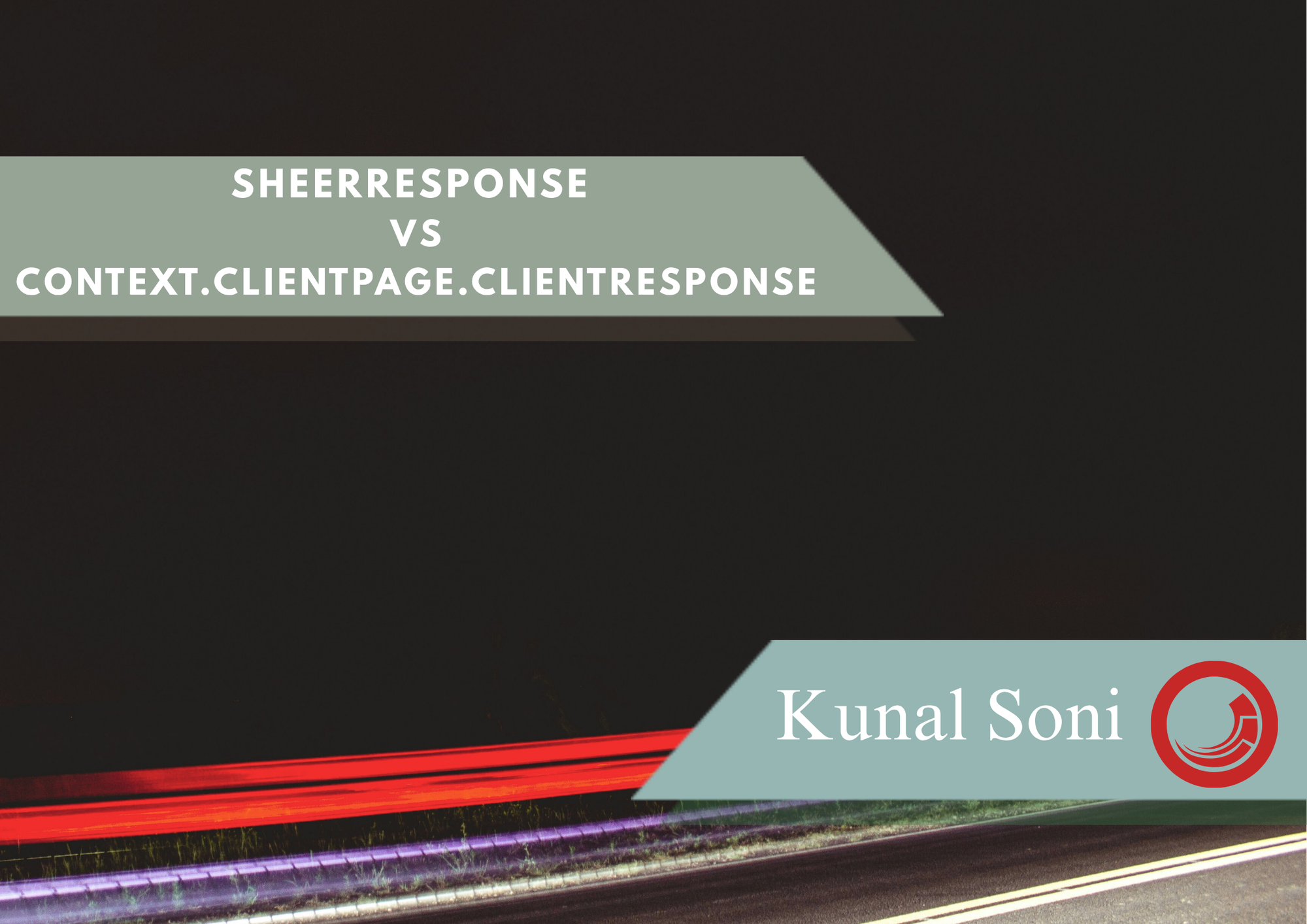Understanding SheerResponse vs Context.ClientPage.ClientResponse

Use Case
While working on a feature where content needed to be sanitized after an author saved it, I ran into a small hiccup. If any fixes were required, I’d apply them and save the content as a new version. This all happened in the OnItemSaved pipeline.
The problem? The content author had no clue a new version had been created and obviously, they didn’t know they needed to publish it.
Problem statement
Everything worked technically, but the user experience was off. Authors weren’t aware of the new version, which meant it often went unpublished. Not ideal.
Solution
While digging for answers, I stumbled upon two Sitecore gems: SheerResponse and Context.ClientPage.ClientResponse. Both let you send messages from your C# backend to the Sitecore content editor UI but they shine in different scenarios.
Let’s break them down.
What is SheerResponse?
SheerResponse is a static helper class from the Sitecore.Web.UI.Sheer namespace. It lets you send commands from server-side code to the client-side UI even from static methods or utility classes.
When to Use:
- In static methods, event handlers, or custom commands
- When you don’t have access to ClientPage
Example
SheerResponse.Alert("This is a static alert!");
SheerResponse.Eval("alert('Hello from SheerResponse!')");This is super handy when you're not inside a UI control or command class that has access to the current page context.
What is Context.ClientPage.ClientResponse?
This is the instance-based sibling of SheerResponse. You access it through the current ClientPage context typically used in commands, UI controls, or pipeline processors.
When to Use:
- Inside a class that inherits from Command or PageCodeBase
- When you want more control over the page lifecycle and response flow
Example:
Context.ClientPage.ClientResponse.Alert("This is an instance alert!");
Context.ClientPage.ClientResponse.Eval("alert('Hello from ClientResponse!')");This approach is more structured and fits perfectly within Sitecore’s UI framework.
Feature |
SheerResponse |
Context.ClientPage.ClientResponse |
Type |
Static class |
Instance property |
Context required |
None (as long as Sheer UI is active) |
Requires ClientPage context |
Flexibility |
More flexible, can be used anywhere |
More structured, used in UI components |
Common in |
Static methods, commands |
PageCodeBase, UI controls, pipelines |
Which One Should You Use?
- Use SheerResponse when you're writing utility methods, event handlers, or custom commands without access to ClientPage.
- Use Context.ClientPage.ClientResponse when you're inside a UI component, command, or pipeline that already has access to the current page context.
In my case, since I was working in the OnItemSaved pipeline, I went with:
Context.ClientPage.ClientResponse. below is the working example.
Context.ClientPage.ClientResponse.Eval($"scForm.postRequest('', '', '', 'item:load(id={newItem.ID},language={item.Language.Name},version={newItem.Version.Number})')");